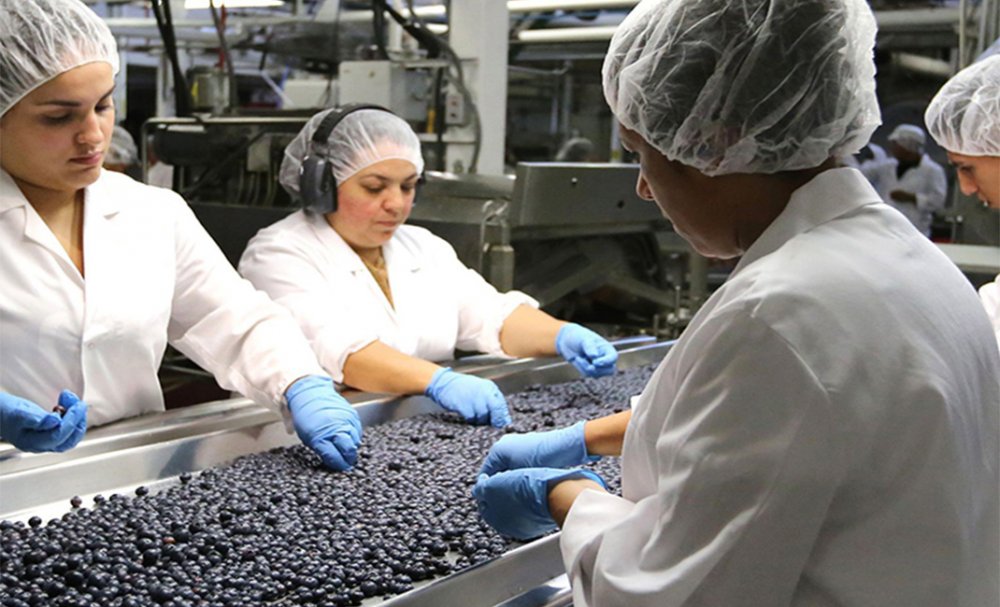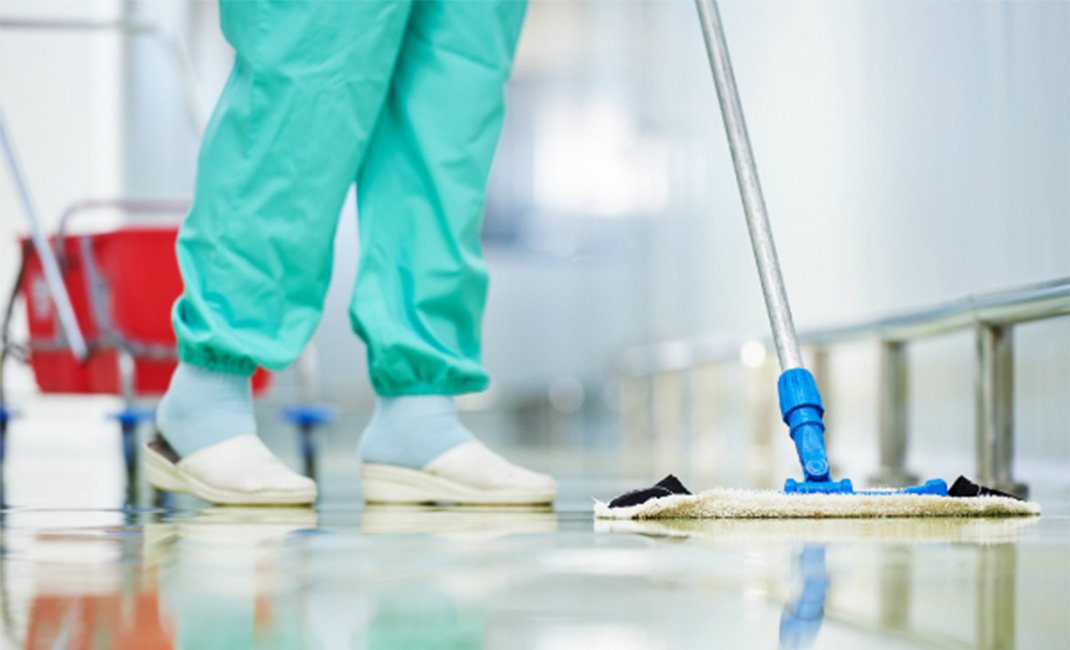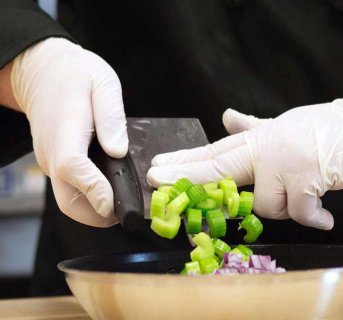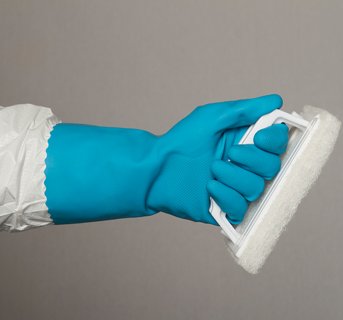Due to a heightened public awareness as a result of all types of media coverage concerning foodborne illnesses, the level of training for employees working in the food industry in general needs to be increased. This is a responsibility that the food industry has to its clients and the general public. Employers have a responsibility to provide a well-designed, informational training program for employees to follow while on the job. It is important that this training be communicated in a language that all employees understand. Practices and procedures must be translated for all employees, no matter what language they speak. Proper hygiene practices should be communicated prior to employment and reaffirmed with periodic training programs.
Signs with pictures of good practices are an excellent method to reinforce training. These should be displayed in areas where applicable and be multilingual. Training should be documented and list the employees that have completed it.
Workers can carry pathogens internally and on their hands, skin, and hair. It is imperative that they follow and understand basic food protection practices and maintain a high degree of personal cleanliness and good sanitation practices to prevent food product contamination. Unless employees understand and follow basic food protection principles, they may unintentionally contaminate food packaging, water, and other workers, thereby creating the opportunity to transmit foodborne illness. Employee health and hygiene fall into two categories, cleanliness and disease control.
Personal hygiene begins at home, with the essential elements for good hygiene being a clean body, clean hair, and clean clothing. Hair in food can be a source of both microbiological and physical contamination. Hairnets and beard covers should be worn to assure food product integrity. Long-sleeved smocks should be worn to cover arm hair. Clean uniforms, aprons, and other outer garments that are put on after the employee gets to work can help minimize contamination. While working, clothing should be kept reasonably clean and in good repair. Removal of smocks, lab coats, or aprons should take place when leaving the work area to go to the employee break room, restroom, or exiting the building. Personal items such as meals and snacks should be stored in a locker or break room area that is located away from processing areas or areas where equipment and utensils are washed.
The only jewelry allowed in a food plant is a plain wedding band and/or one small post earring in each ear. No other jewelry is to be worn because it may fall into the product, it can present a safety hazard and it cannot be adequately sanitized against bacterial transmission. It should be removed prior to entering the processing facility.
Employees must wear different colored smocks when going from a raw processing part of the establishment to the cooked processing side. They should also step into a sanitizer footbath between the two processing areas to eliminate the bacteria on their shoes.
No employee who is affected with has been exposed to or is a carrier of a communicable disease, the flu or a respiratory problem, or any other potential source of microbiological contamination shall work in any area where there is a reasonable possibility that food or food ingredients can be contaminated. The number one symptom of a foodborne illness is diarrhea. Other symptoms include fever, dizziness, vomiting, and sore throat with fever or jaundice. Any employee with these symptoms should not be allowed to work around food.
A company policy should be established requiring that employees report any active case of illness to supervisors before beginning work. If an employee has been diagnosed with a foodborne illness, exclude them from the establishment, and contact the local health department. The health department must be notified if the employee has been diagnosed with one of the following foodborne illnesses: Salmonella typhi, Shigella species, Shiga toxin-producing E. coli, or hepatitis A virus.
Staphylococcus aureus is caused by food products touched by employee's hands or being sneezed upon. Thirty to 50 percent of adults carry this in their nose and 20 to 35 percent carry this in their skin. All employees must avoid uncontrolled, uncovered coughing or sneezing.
The best way to prevent the spread of viruses to food is to ensure that hands are washed and that they are clean and protected when handling food. Anytime a human hand touches something, there is a risk of contamination with harmful microorganisms or chemicals.
Employees must wash and sanitize their hands thoroughly in a hand-washing facility before starting work, especially if the employee has direct contact with food. The hands should also be washed after each absence from the work area, after visiting the restrooms, after eating, drinking, smoking, chewing gum, chewing tobacco, coughing, using a handkerchief or tissue, and any other times when hands have become soiled or contaminated.
Consumption of food, drink, smoking or tobacco use is permitted only in authorized areas. All of these actions would generate saliva, which could contaminate the food. Additionally, employees should never spit in the building. Lunches should be stored in designated areas and refrigerators emptied weekly. No food should be permitted in employee lockers or at work areas and no objects such as toothpicks, matchsticks, or similar objects are allowed in the mouth while on the job.
The hand-washing facility should have liquid soap, cold and hot water that is 100° F, and able to run for at least 20 seconds at that temperature. The employee must scrub the surface of their hands and arms vigorously for 10 to 15 seconds. The friction itself can remove many microorganisms. They should scrub the areas between the fingers and under the nails and then rinse the hands thoroughly. Hands should be dried with paper towels or warm air dryers. Adequate waste containers should be supplied for used towels.
Hands and fingernails must be kept clean. Fingernails should be short and absent of fingernail polish or false fingernails. Cuts or burns on the food worker’s hands should be thoroughly bandaged, and covered with clean gloves. The use of gloves often creates a false sense of security but does not eliminate the need for handwashing and when necessary, sanitizing. Improperly used gloves may become a vehicle for spreading pathogens. Non-disposable gloves should be washed and sanitized before starting work and as needed. Disposable gloves should be changed whenever contamination is a possibility, such as taking out the trash, handling cleaning chemicals, handling any animals, or picking up dropped items. Under no circumstances should alive or dead rodent be touched. Hands must be washed before putting on this new pair of disposable or non-disposable gloves.
Hand or glove dips may also be used, but only after hand washing. Sanitizers are designed for this purpose and should be monitored frequently to ensure proper concentration is maintained. These dips are not a substitute for proper handwashing.
Management should serve as role models for good work habits and acceptable hygienic practices. They should continually emphasize how important it is. Policies should reassure the employees that they will not lose their jobs if they report an illness or a communicable disease. Once employees understand what is expected of them, effective supervision of employee practices should be used to ensure that employees follow proper procedures. Training should be conducted annually and reviewed whenever incorrect practices are observed.
(www.janasafety.gr)









